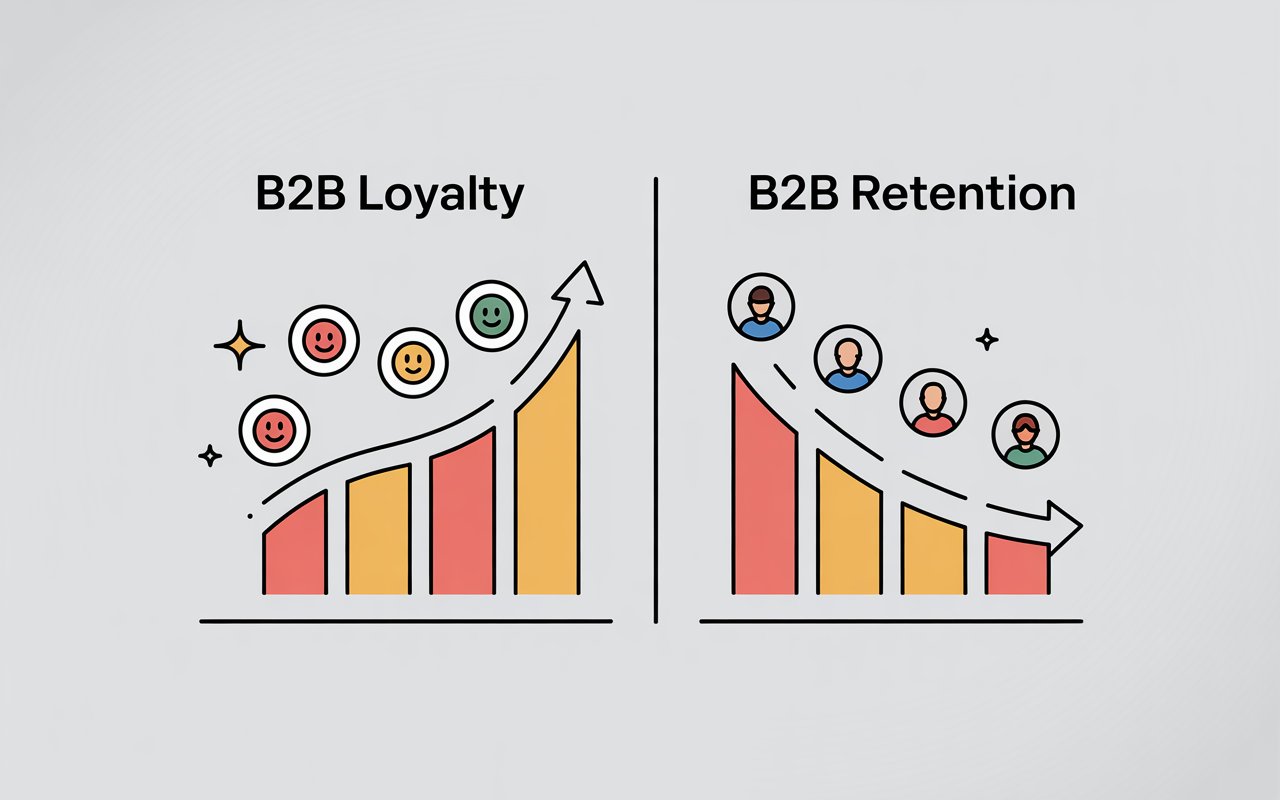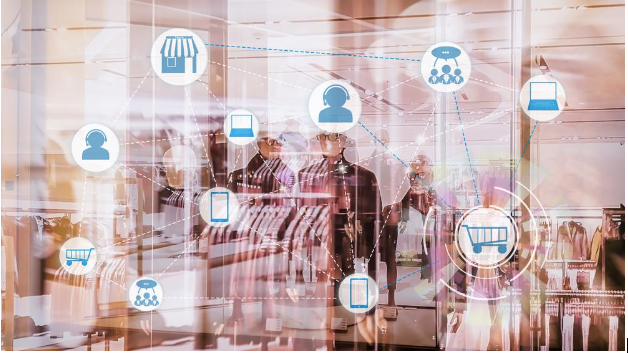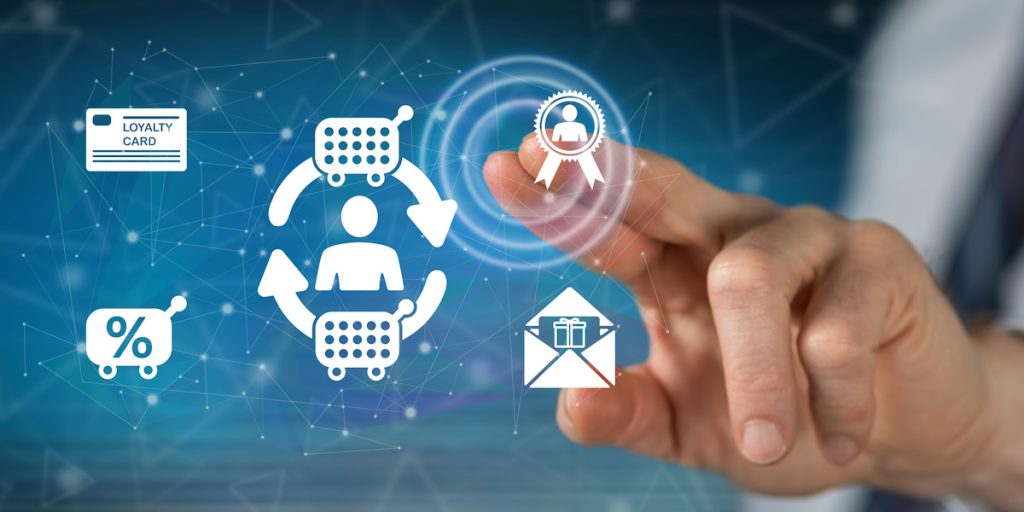When businesses talk about keeping clients for the long term, two terms often come up: B2B loyalty and B2B retention. They might sound similar, but they are not the same. B2B loyalty vs. B2B retention is a distinction that can shape your marketing, sales, and service strategies. Retention focuses on keeping a client over time, while loyalty is about building a deep, emotional connection that makes a client choose you repeatedly, regardless of competitor offers.
Why does this matter? Because a company can have high retention but low loyalty — meaning customers are staying out of convenience or habit, not commitment. If a better deal comes along, they may leave. On the flip side, loyal customers actively resist switching, even when tempted by cheaper or faster alternatives.
Understanding B2B Loyalty
B2B loyalty is about building a strong, trust-based relationship with clients. It goes beyond contracts and transactions — it’s about shared values, consistent experiences, and a sense of partnership.
A loyal client is not only more likely to buy again but also to recommend your brand to others, defend it in conversations, and provide valuable feedback.
Some key drivers of B2B loyalty include:
- Consistency in product or service quality
- Personalized experiences tailored to the client’s industry and needs
- Transparency in communication and pricing
- Proactive support that anticipates issues before they arise
Well-designed B2B loyalty programs are one of the most effective ways to nurture this kind of relationship. These programs might offer:
- Exclusive rewards for repeat purchases
- Early access to product updates
- Special partner events or webinars
- Tier-based incentives for high-volume clients
Understanding B2B Retention
Retention, on the other hand, focuses on reducing churn — making sure customers don’t leave for a competitor. While loyalty often results in retention, you can retain customers without having their loyalty.
For example, a client might renew their contract because switching providers would be time-consuming or expensive, not because they’re emotionally invested in your brand.
Key strategies for B2B customer retention include:
- Maintaining competitive pricing
- Offering responsive customer support
- Ensuring timely deliveries and error-free operations
- Regularly checking in with clients to measure satisfaction
Retention success is often measured through metrics like:
- Renewal rate (percentage of customers who renew contracts)
- Churn rate (percentage of customers lost during a specific period)
- Repeat purchase rate
Key Differences Between Loyalty and Retention
Aspect | B2B Loyalty | B2B Retention |
Primary Focus | Emotional and trust-based relationship | Continued business relationship |
Main Goal | Create brand advocates and long-term partners | Keep existing customers from leaving |
Measurement | NPS (Net Promoter Score), referrals, advocacy rate | Churn rate, renewal rate, repeat purchase rate |
Approach | Personalized programs, trust-building, recognition | Competitive offers, service quality, responsiveness |
Why Both Are Essential
If your business only focuses on retention, you risk having “silent churn” — customers who stay now but are mentally ready to leave when a better option appears.
If you focus only on loyalty, you may overlook operational or service issues that can drive even loyal clients away.
The best approach is a dual strategy:
- Retention ensures clients stay in the short and medium term.
- Loyalty ensures they stay for the long term and bring others with them.
Building Loyalty and Retention Together
Loyalty and retention may have different focuses, but they are closely linked. A well-thought-out strategy addresses both at the same time, ensuring your customers not only stay but also become advocates for your brand. Businesses that integrate these two goals often see stronger client relationships, more predictable revenue, and a higher B2B customer lifetime value.
Here’s how companies can build loyalty and retention together in a way that creates lasting business impact:
1. Create Value Beyond the Transaction
Retention starts with delivering what you promise, while loyalty grows when you deliver more than what’s expected. This could mean providing educational resources, exclusive insights, or business opportunities your clients wouldn’t have access to elsewhere.
For example, a manufacturing supplier could offer quarterly market trend reports to help clients plan their inventory better — a benefit that strengthens both satisfaction and commitment.
2. Build Trust Through Transparency
In B2B markets, long-term partnerships depend heavily on trust. Be transparent about pricing, project timelines, and potential challenges. When problems arise, communicate early and offer solutions. This approach protects retention in the short term while deepening loyalty in the long term.
You can also strengthen trust through trust in B2B relationships initiatives, such as open Q&A sessions or dedicated account managers.
3. Personalize Your Engagement
Generic communication can make clients feel undervalued. Instead, tailor interactions based on purchase history, preferences, and business goals. This could include sending personalized offers, inviting them to relevant webinars, or recognizing milestones like partnership anniversaries.
Personalization not only increases satisfaction (helping retention) but also shows clients that they are valued on a personal level (building loyalty).
4. Implement Tiered Loyalty Programs with Retention Triggers
A tiered B2B loyalty program can motivate clients to keep doing business with you. For example:
- Silver Tier: Basic rewards for recurring orders.
- Gold Tier: Priority support, exclusive previews of new products.
- Platinum Tier: Co-branded marketing opportunities or strategic collaborations.
Retention triggers, such as special renewal discounts or complimentary service upgrades, can be integrated at key points to prevent clients from considering alternatives.
5. Measure Both Loyalty and Retention Metrics
You can’t improve what you don’t measure.
- For retention: track churn rate, renewal rate, and repeat purchase frequency.
- For loyalty: monitor Net Promoter Score (NPS), referral rates, and engagement in loyalty programs.
Analyzing both sets of data allows you to spot risks early and adjust strategies before you lose customers.
6. Align Internal Teams Around the Same Goal
Loyalty and retention are not just marketing responsibilities — they require collaboration between sales, customer service, and operations. For instance, sales teams can feed back customer insights to marketing, while customer service can act on retention signals such as declining usage patterns.
When all teams work toward the same objective, clients experience consistency across all touchpoints, reinforcing both loyalty and retention.
Real-World Examples
- Tech Solutions Provider: Implemented a loyalty program offering free training for long-term clients. Result: A 35% increase in customer referrals.
- Manufacturing Supplier: Focused on retention by guaranteeing 48-hour issue resolution. Result: Reduced churn by 20% over one year.
- Marketing Agency: Combined both strategies by offering exclusive research reports (loyalty) and monthly performance check-ins (retention).
Final Thoughts
The debate between B2B loyalty vs B2B retention is not about choosing one over the other — it’s about understanding how they work together. Retention secures your present revenue, while loyalty builds your future growth.
When you focus on both, you create a cycle where satisfied clients become loyal advocates, and loyal advocates stay longer, spend more, and bring others to your business. In B2B markets, where relationships are often long-term and high-value, mastering both is not just an advantage — it’s a necessity.
Is Your B2B Strategy Keeping Customers — And Keeping Them Loyal?




